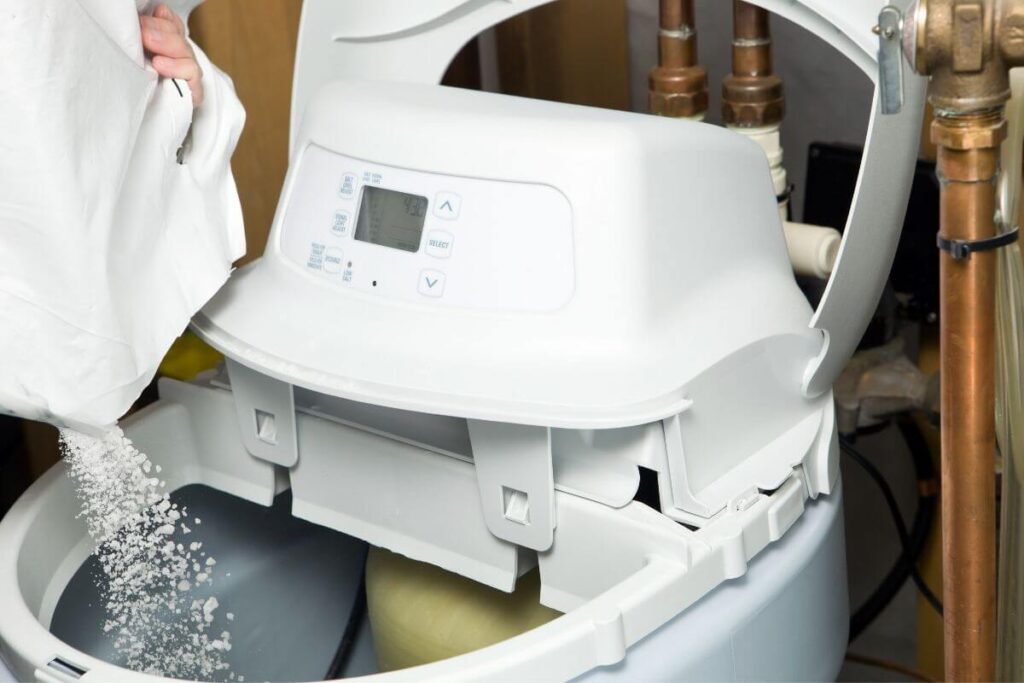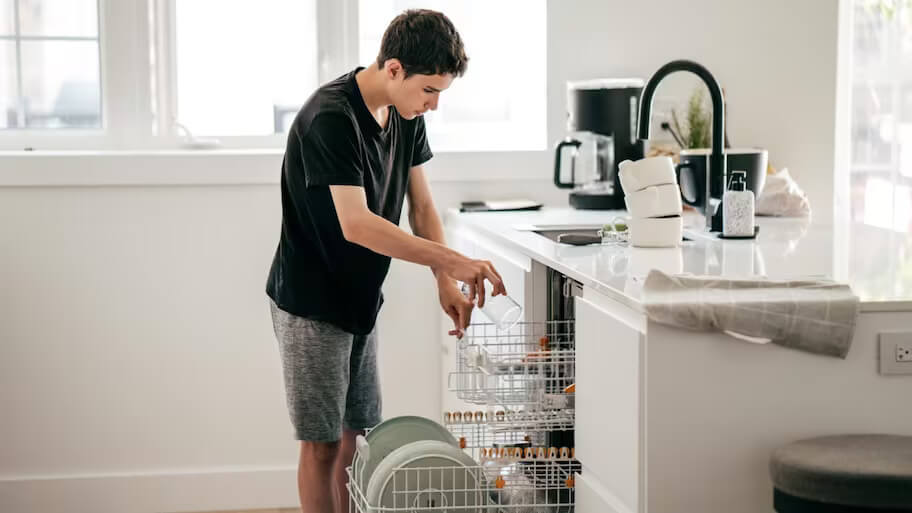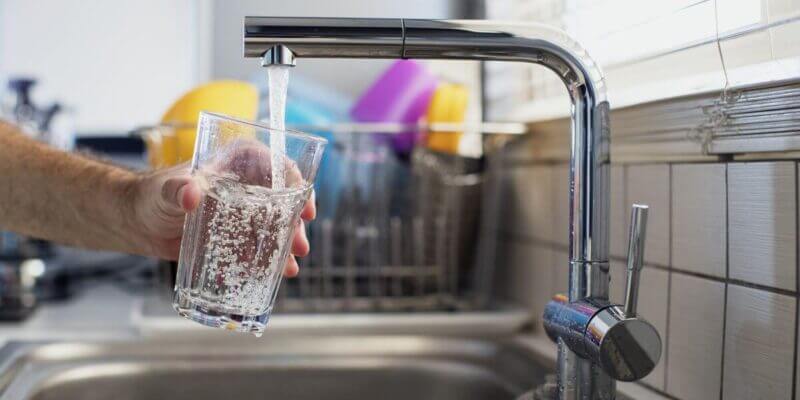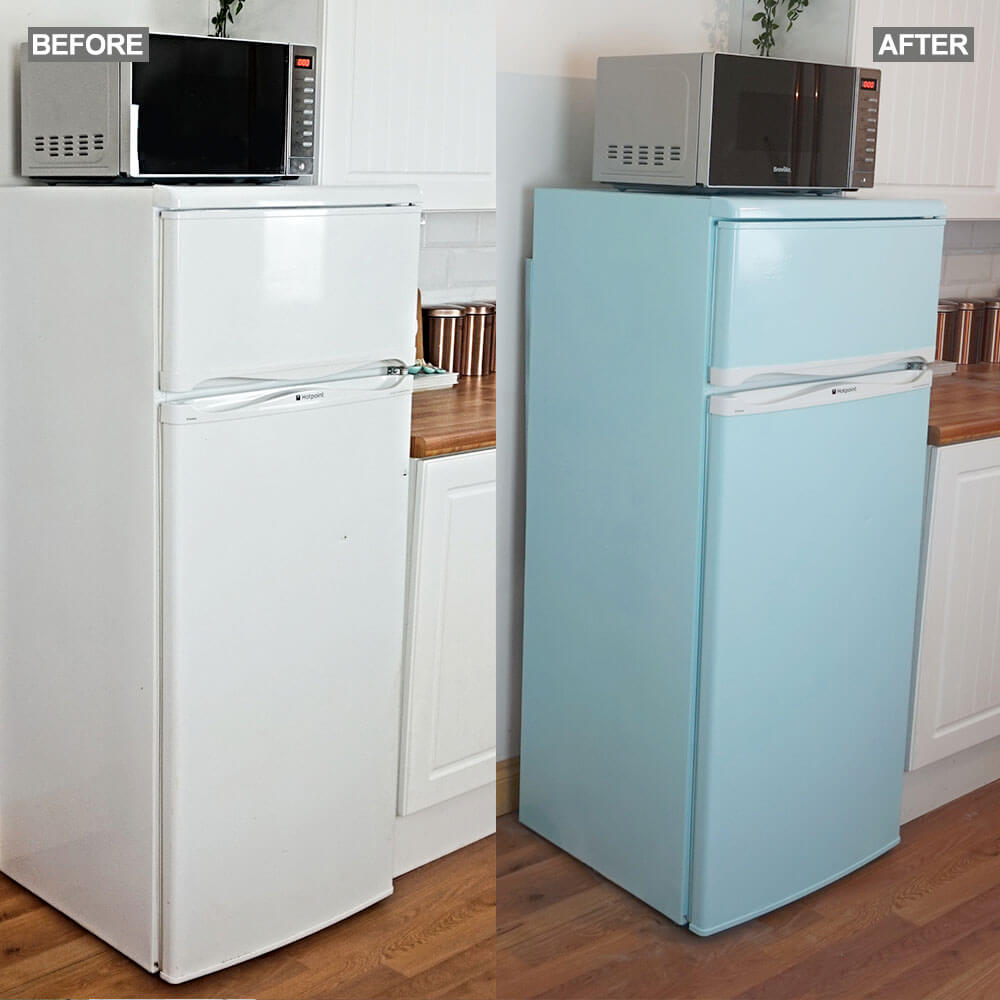
Are you tired of dealing with limescale buildup on your appliances and fixtures? Well, a water softener could be your knight in shining armor. But, like any hero, your water softener needs a little TLC to keep performing at its best. In this comprehensive guide, we’re diving deep into water softener maintenance, providing you with all the information you need to become an expert in extending the life of your appliance. Let’s talk about how you can make this appliance your trusty sidekick in the battle against hard water.
Why Bother with Water Softener Maintenance?
You might be wondering, “Why should I even care about water softener maintenance?” It’s a fair question, and we’ve got the answers:
- Appliance Longevity: Your water softener isn’t just an expense; it’s an investment. Proper maintenance can significantly extend its lifespan. After all, nobody likes forking out money for replacements.
- Improved Efficiency: When your water softener is well-maintained, it works more efficiently. That means it’ll do a better job of softening your water, helping you save money on soap and energy bills.
- Better Water Quality: Softened water isn’t just kinder to your appliances; it’s also kinder to your skin and hair. Plus, it makes your dishes and laundry cleaner and shinier. Who doesn’t want that?
- Eco-Friendly: Reducing the need for harsh detergents and excessive water usage not only saves you money but also contributes to a greener planet.
Regular Water Softener Maintenance: A Step-by-Step Guide

Maintaining a water softener is easier than you might think. Follow these steps to keep your appliance in tip-top shape.
Inspect the Salt Levels
Q: Wondering how much salt you should have in your water softener? A: The answer is: enough to cover the water level. Don’t let it drop too low, or your softener’s effectiveness takes a nosedive.
Here’s what you do:
- Check the salt level regularly, at least once a month.
- Keep the salt level at least half-full to maintain efficient operation.
Clean the Brine Tank
Q: What’s a brine tank, and why should I clean it? A: The brine tank is where the magic happens. It’s where your water softener regenerates, and keeping it clean ensures a longer life for your appliance.
Here’s how to clean it:
- Empty the tank completely.
- Scrub it down with a brine tank cleaner.
- Rinse thoroughly and refill it with salt.
Check for Salt Bridges
Q: Salt bridges? Do I need a chisel for this? A: Not quite! Salt bridges are hardened layers of salt that form above the water line in your brine tank, and they can wreak havoc on your water softener’s performance.
Here’s what to do:
- Gently break up the salt bridge using a broom handle or something similar.
- Remove the broken pieces, and voilà, your softener is back in action.
Inspect the Resin Tank
Q: What’s the resin tank, and why should I inspect it? A: The resin tank contains resin beads that do the heavy lifting of removing hard minerals from your water. Keeping it clean is crucial for soft water.
Here’s the drill:
- Check for signs of resin beads clumping together or any discoloration.
- If you notice any issues, consider a resin bed cleaner to rejuvenate your tank.
Test Water Hardness
Q: How do I know if my water is still soft? A: Testing your water hardness is as easy as pie and lets you adjust your water softener settings as needed.
Here’s what you need to do:
- Use a water hardness test kit, readily available at most hardware stores.
- Adjust your water softener settings to achieve the desired level of softness.
Keep an Eye on the Drain Line
Q: What’s this about the drain line? A: The drain line is where your water softener flushes out impurities during regeneration. Keeping it clear is essential for smooth operation.
Here’s what to check:
- Ensure there are no kinks or blockages in the drain line.
- Check that it’s securely connected and draining correctly.
Service Your Water Softener Annually
Q: Do I really need to service my water softener every year? A: Absolutely! An annual service by a professional can catch and address issues early, saving you money in the long run.
Here’s the deal:
- Schedule a yearly maintenance check with a qualified technician.
- They can fine-tune your system and ensure it’s performing optimally.
Stay Mindful of the Environment
Q: Is there a way to make water softener maintenance eco-friendly? A: You bet! Being environmentally conscious while maintaining your appliance is not only trendy but responsible.
Here are some eco-friendly tips:
- Use high-purity salt to reduce brine discharge.
- Consider a demand-initiated regeneration system to minimize water waste.
- Recycle old resin beads when it’s time to replace them.
Troubleshooting Common Water Softener Issues

Even with regular maintenance, problems can crop up. Here are some common issues and how to tackle them:
- Low Water Pressure: Check for clogs in the resin tank and clean them out.
- Salt Bridges: Break up the bridge and remove the hardened salt layer.
- Resin Bead Clumping: Use a resin bed cleaner to break up clumps.
- Hard Water Residue: Test your water hardness and adjust your settings accordingly.
- Leaks or Drips: Tighten any loose fittings and replace damaged O-rings.
- Strange Noises: Check for salt bridges or salt mushing, which can create unusual sounds.
The Importance of Water Softener Maintenance in Detail
Now, let’s take a closer look at each aspect of water softener maintenance, providing you with a more in-depth understanding of how to maintain your water softener effectively:
- Inspecting Salt Levels: Maintaining the right salt level in your water softener is essential for efficient operation. If you let the salt level drop too low, your appliance won’t be able to regenerate properly, leading to hard water problems. Regularly checking the salt level can prevent this issue.
- Cleaning the Brine Tank: The brine tank is where the regeneration process takes place. Over time, salt residue can build up on the walls of the tank, affecting its ability to create brine, which is crucial for regeneration. Regular cleaning ensures that the tank operates smoothly, extending the life of your water softener.
- Checking for Salt Bridges: Salt bridges are a common issue in water softeners. These are hardened layers of salt that form above the water line in the brine tank. If not addressed, they can block the flow of water and salt, reducing the effectiveness of your softener. By breaking up salt bridges, you’ll prevent these performance issues.
- Inspecting the Resin Tank: The resin tank is where the actual softening of water occurs. Resin beads in the tank attract and remove hard minerals from the water. Over time, these beads can clump together, reducing their effectiveness. Regular inspections help you identify issues with the resin tank, allowing you to address them promptly and maintain optimal water softening.
- Testing Water Hardness: Water hardness can change over time due to factors like environmental conditions and usage patterns. Testing your water hardness helps you determine if your water softener settings need adjustment. By keeping the water hardness in check, you ensure your softener delivers consistently soft water.
- Keeping an Eye on the Drain Line: The drain line is responsible for removing impurities from your water softener during regeneration. If it becomes clogged or misaligned, it can cause issues with the regeneration process. Regularly inspecting the drain line and ensuring it’s in good condition helps maintain the overall efficiency of your water softener.
- Annual Professional Service: While you can handle many aspects of water softener maintenance yourself, an annual service by a qualified technician is crucial. They have the expertise to identify and address potential problems that may not be apparent to the average homeowner. Professional service is an investment in the long-term health and performance of your water softener.
- Eco-Friendly Water Softener Maintenance:For those who want to be environmentally responsible, there are several eco-friendly practices you can incorporate into your water softener maintenance routine:
- Using high-purity salt not only extends the life of your water softener but also reduces the amount of brine discharge, which can be harmful to the environment.
- Consider a demand-initiated regeneration system if you want to minimize water waste. This system regenerates the resin bed only when necessary, reducing overall water consumption.
- When it’s time to replace the resin beads in your water softener, explore recycling options. Many recycling centers accept resin beads, so you can dispose of them responsibly.
Troubleshooting Common Water Softener Issues in Depth
Let’s explore some common water softener issues in more detail and discuss how to address them effectively.
Low Water Pressure
Low water pressure can be a sign of clogs in the resin tank. To resolve this issue, you’ll need to perform a more thorough inspection of the tank. Here’s what to do:
- Turn off your water softener.
- Disconnect the resin tank and remove the distributor tube.
- Carefully check for any obstructions in the tank, such as sediment or debris.
- Clean the tank and distributor tube thoroughly, ensuring that they are free of any blockages.
- Reassemble the components, turn your water softener back on, and monitor water pressure to ensure it returns to normal.
Salt Bridges
Breaking up salt bridges is crucial for maintaining the efficiency of your water softener. To address this issue, follow these steps:
- Turn off your water softener.
- Use a long object like a broom handle to gently break the salt bridge. Be careful not to damage the brine tank or other components.
- Remove the broken salt pieces from the tank.
- Turn the water softener back on, and it should resume normal operation.
Resin Bead Clumping
Resin bead clumping can reduce the effectiveness of your water softener. Here’s how to address this issue:
- Turn off your water softener.
- Remove the resin tank from the appliance.
- Carefully examine the resin beads for signs of clumping or discoloration.
- If you notice clumps, use a resin bed cleaner according to the manufacturer’s instructions to rejuvenate the beads.
- Reassemble the tank and restart your water softener. It should work more efficiently after the cleaning process.
Hard Water Residue
If you’re noticing hard water residue on your fixtures or appliances, it’s essential to test your water hardness and adjust your settings accordingly. Follow these steps:
- Obtain a water hardness test kit from your local hardware store.
- Test your water using the kit to determine its hardness level.
- Refer to your water softener’s user manual to adjust the settings to match the water hardness level you’ve identified.
Leaks or Drips
Leaks or drips in your water softener can be caused by loose fittings or damaged O-rings. To address these issues, follow these steps:
- Turn off your water softener.
- Carefully inspect all connections, fittings, and O-rings for any signs of damage or looseness.
- Tighten any loose fittings and replace any damaged O-rings with the appropriate replacements.
- Turn your water softener back on and monitor for leaks. If properly addressed, the leaks should cease.
Strange Noises
Unusual noises coming from your water softener can be caused by salt bridges or a phenomenon called “salt mushing.” Here’s how to deal with this issue:
- Turn off your water softener.
- If the noise is due to a salt bridge, follow the steps mentioned earlier to break up the bridge.
- If the noise persists and you suspect salt mushing, consider using a salt grid plate or salt support kit to prevent this issue.
Final Thoughts
In the battle against hard water, your water softener is your trusty sidekick, but even heroes need some care. By following these maintenance tips, you can ensure your water softener stays in top form, saving you money and ensuring that your appliances and fixtures remain free from the tyranny of limescale. Remember, it’s not just about prolonging the life of your appliance; it’s about enjoying the benefits of soft water every day. So, saddle up and take good care of your water softener – it’s your ticket to a brighter, shinier, and eco-friendly future!
Frequently Asked Questions (FAQ) – Water Softener Maintenance
Got questions about water softener maintenance? We’ve got answers! Check out these frequently asked questions to get the lowdown on keeping your water softener in tip-top shape.
Q1: How often should I check the salt level in my water softener? A1: It’s advisable to check the salt level in your water softener at least once a month. Keeping the salt level at least half-full ensures efficient operation.
Q2: What should I use to clean the brine tank, and how often should I clean it? A2: You can clean the brine tank with a brine tank cleaner. The frequency of cleaning depends on usage, but doing it once or twice a year is generally sufficient.
Q3: How do I break up salt bridges in the brine tank? A3: To break up salt bridges, use a long object like a broom handle to gently tap and break the hardened salt layer. Be careful not to damage the tank in the process.
Q4: How often should I inspect the resin tank, and what should I look for? A4: Regular inspections, ideally once a year, are recommended. Look for signs of resin bead clumping or discoloration, which can reduce the tank’s effectiveness.
Q5: How do I test the water hardness in my area, and why is it important? A5: You can test water hardness using a water hardness test kit available at most hardware stores. It’s essential to adjust your water softener settings correctly, ensuring it softens your water effectively.
Q6: What’s the significance of the drain line in water softener maintenance? A6: The drain line is crucial because it removes impurities during regeneration. Keeping it free from kinks and blockages ensures your water softener operates smoothly.
Q7: How frequently should I schedule professional servicing for my water softener? A7: An annual service by a qualified technician is recommended. Professional service can catch and address potential issues early, saving you money in the long run.
Q8: What are some eco-friendly practices for water softener maintenance? A8: You can make your water softener maintenance eco-friendly by:
- Using high-purity salt to reduce brine discharge.
- Considering a demand-initiated regeneration system to minimize water waste.
- Recycling old resin beads when it’s time to replace them.
Q9: How can I address low water pressure issues in my water softener? A9: Low water pressure can result from clogs in the resin tank. To address this, follow the detailed steps mentioned in the guide to clear any obstructions.
Q10: What do I do if my water softener is leaking or dripping? A10: Leaks or drips are often caused by loose fittings or damaged O-rings. Tighten loose fittings and replace damaged O-rings to address this issue.
Q11: What should I do if my water softener makes strange noises? A11: Unusual noises can result from salt bridges or salt mushing. Break up salt bridges and consider using a salt grid plate or salt support kit if you suspect salt mushing.
